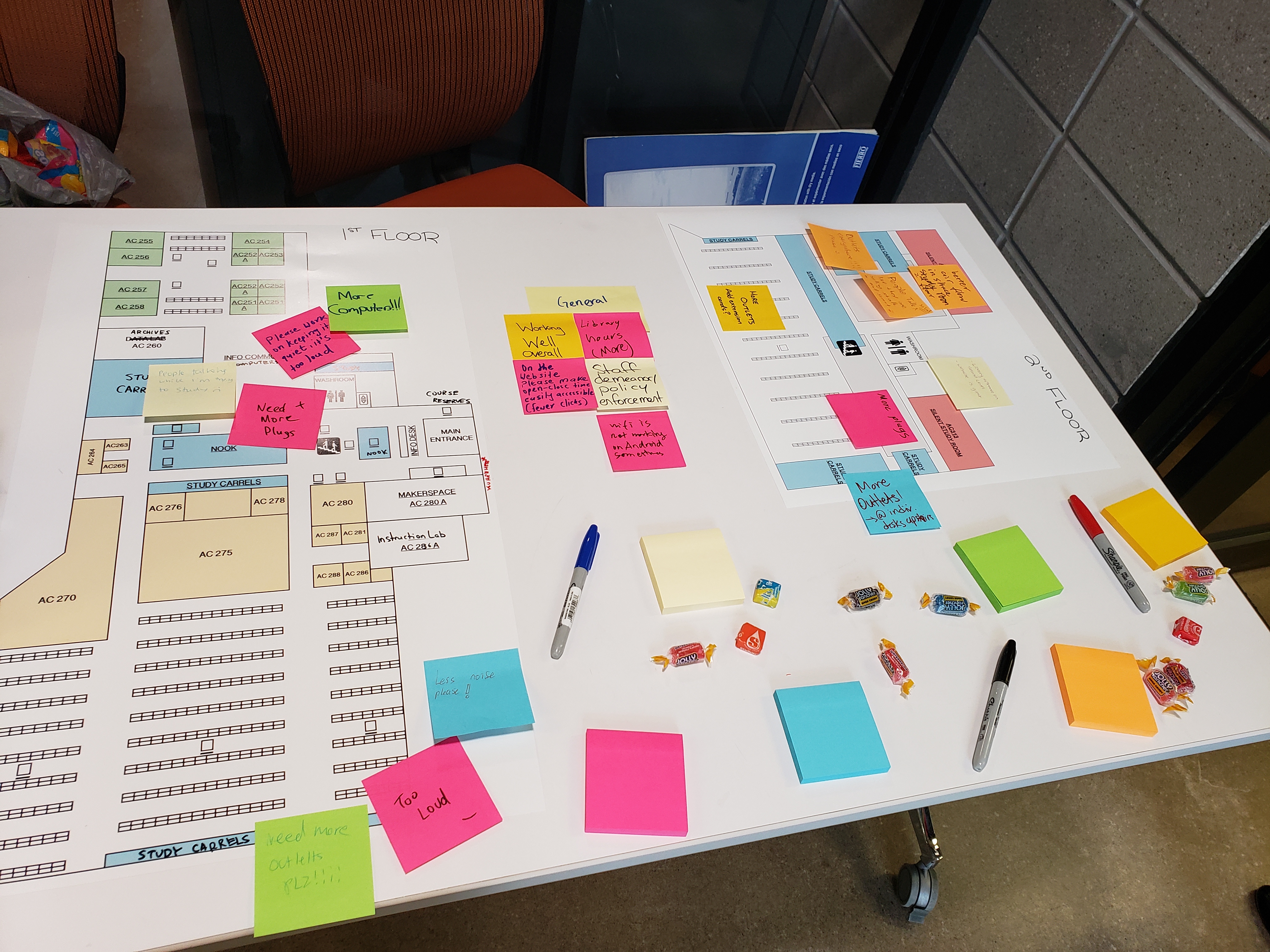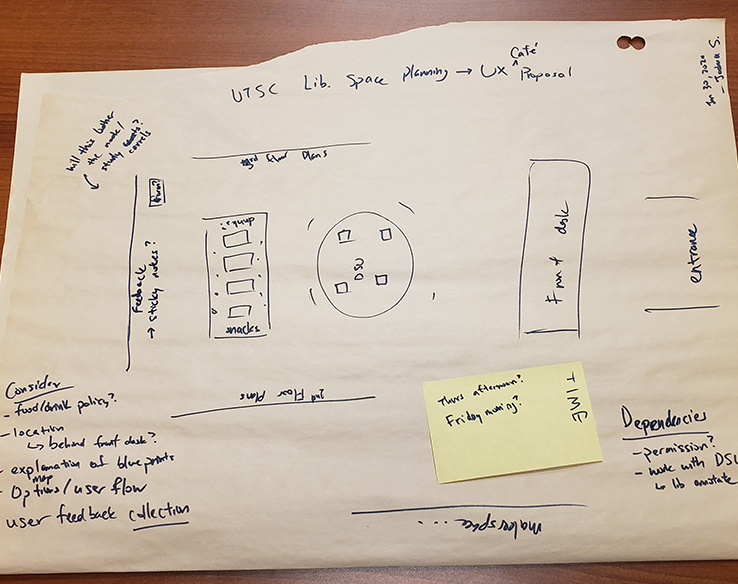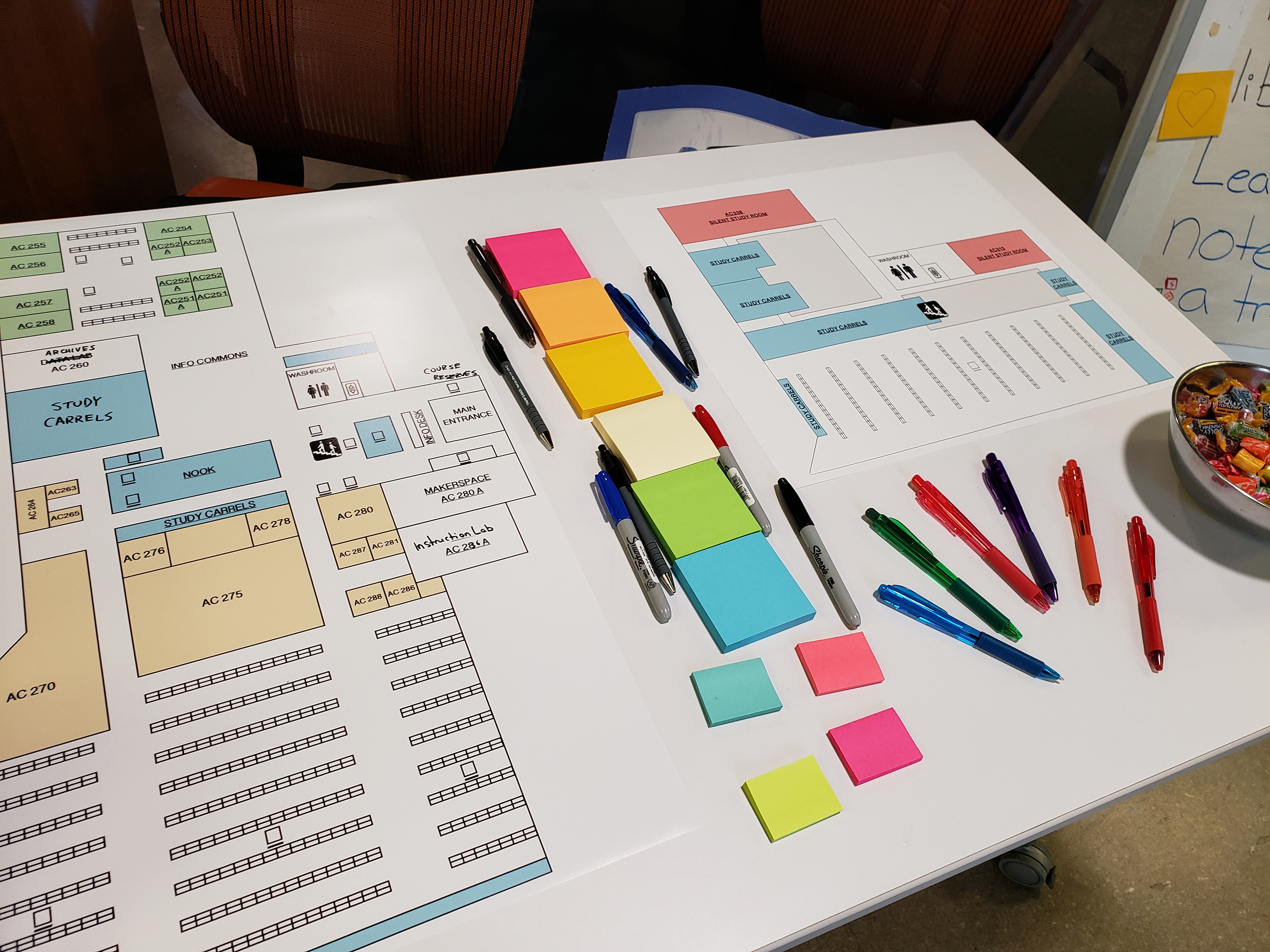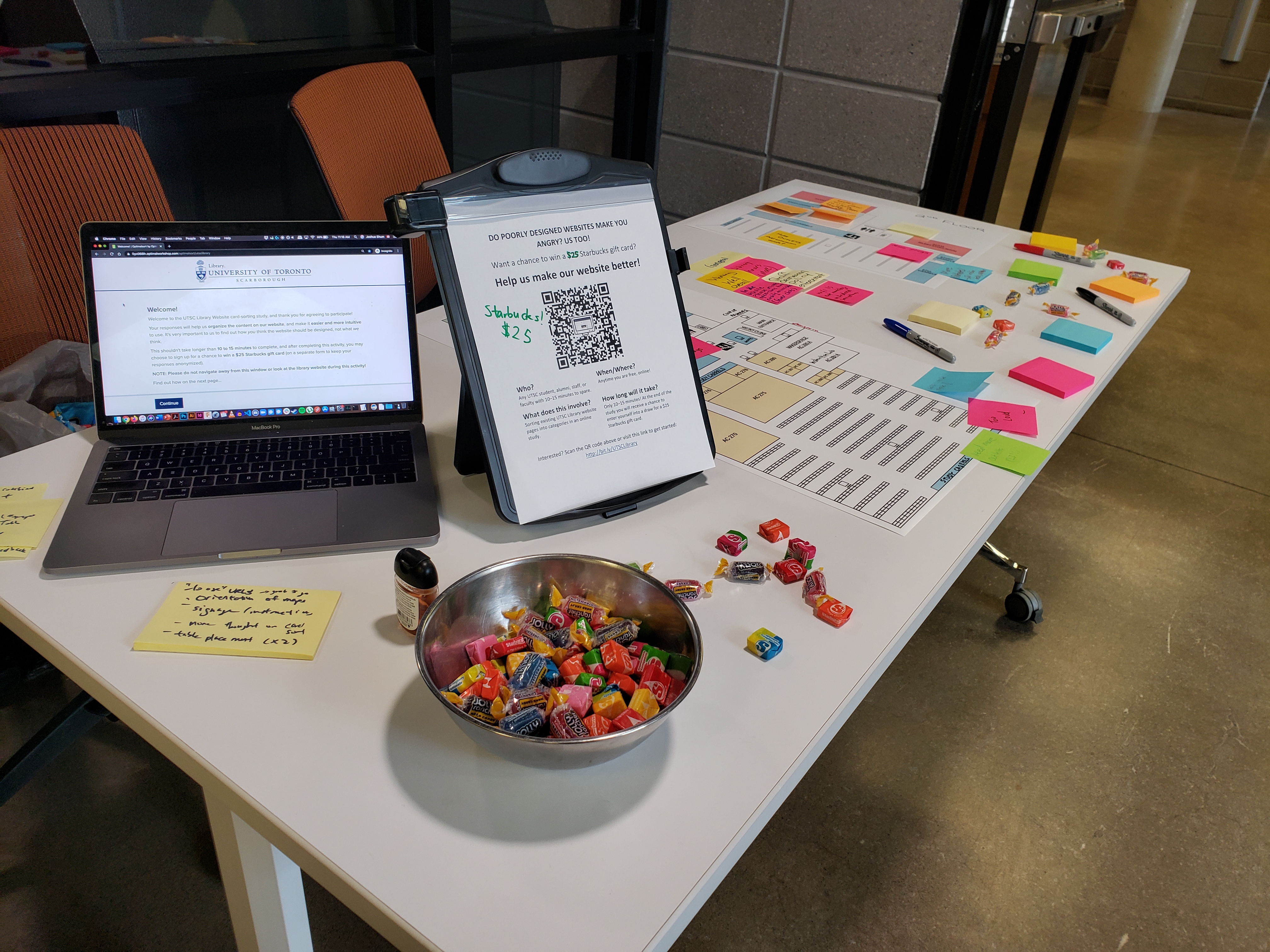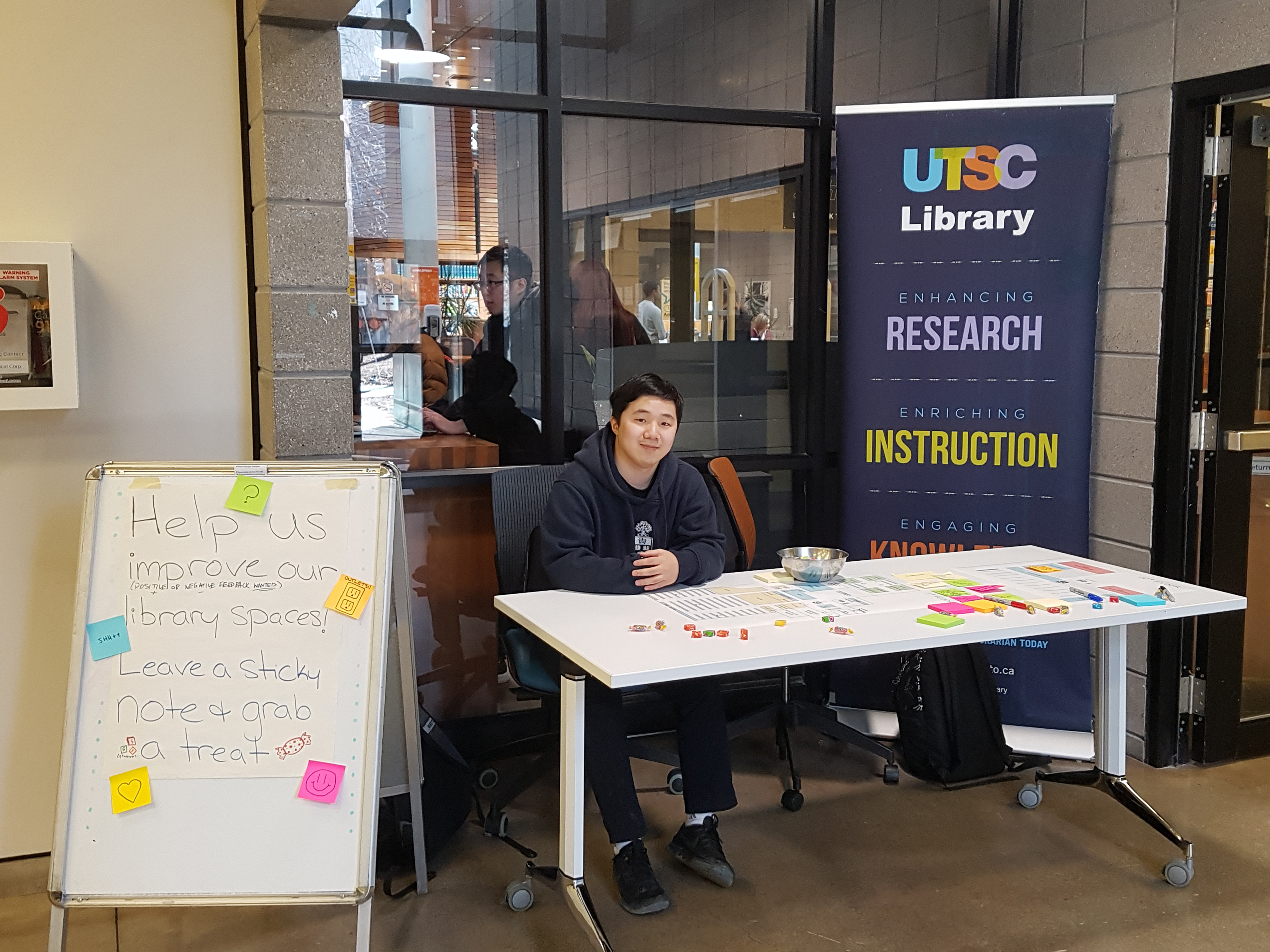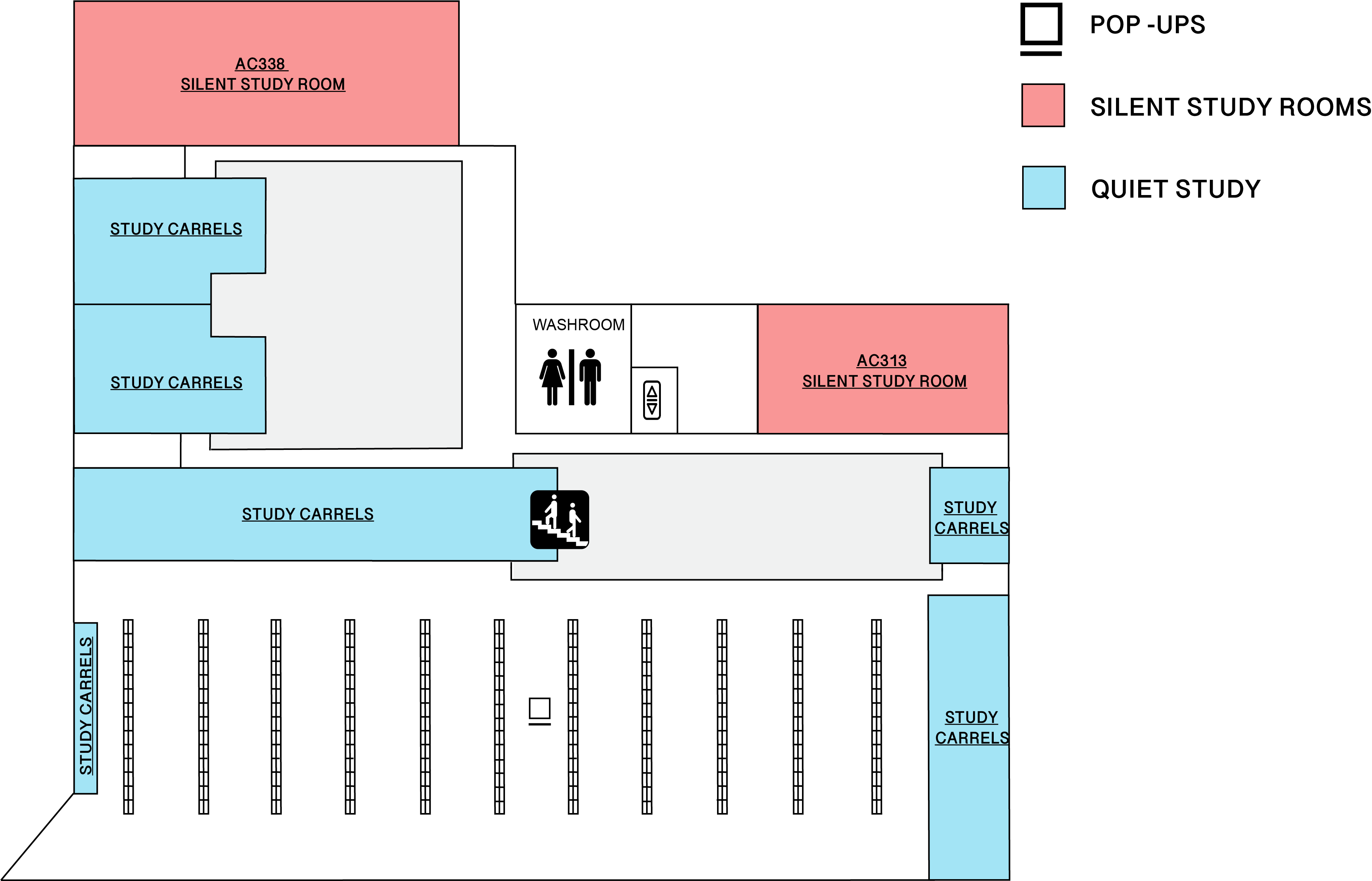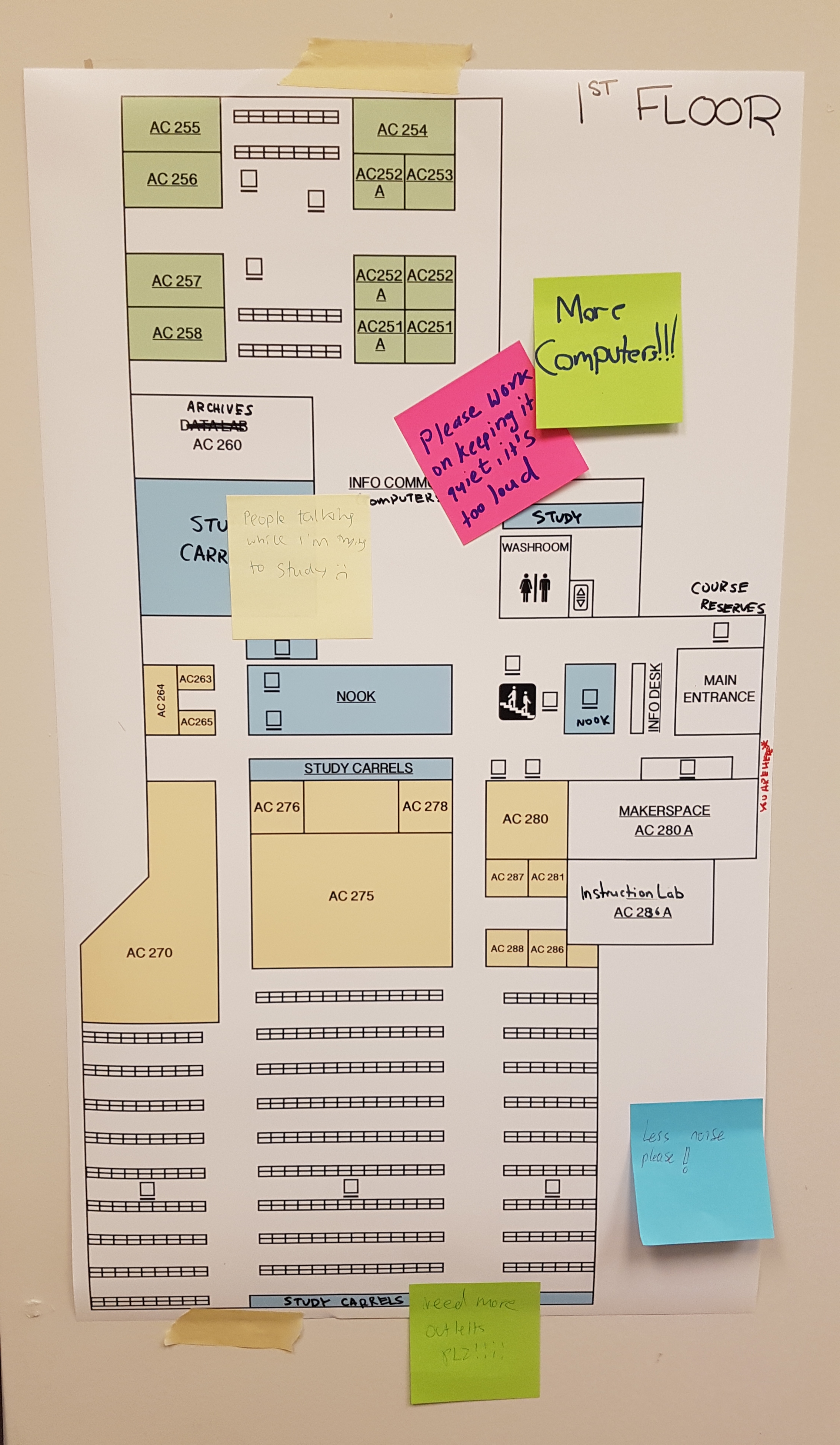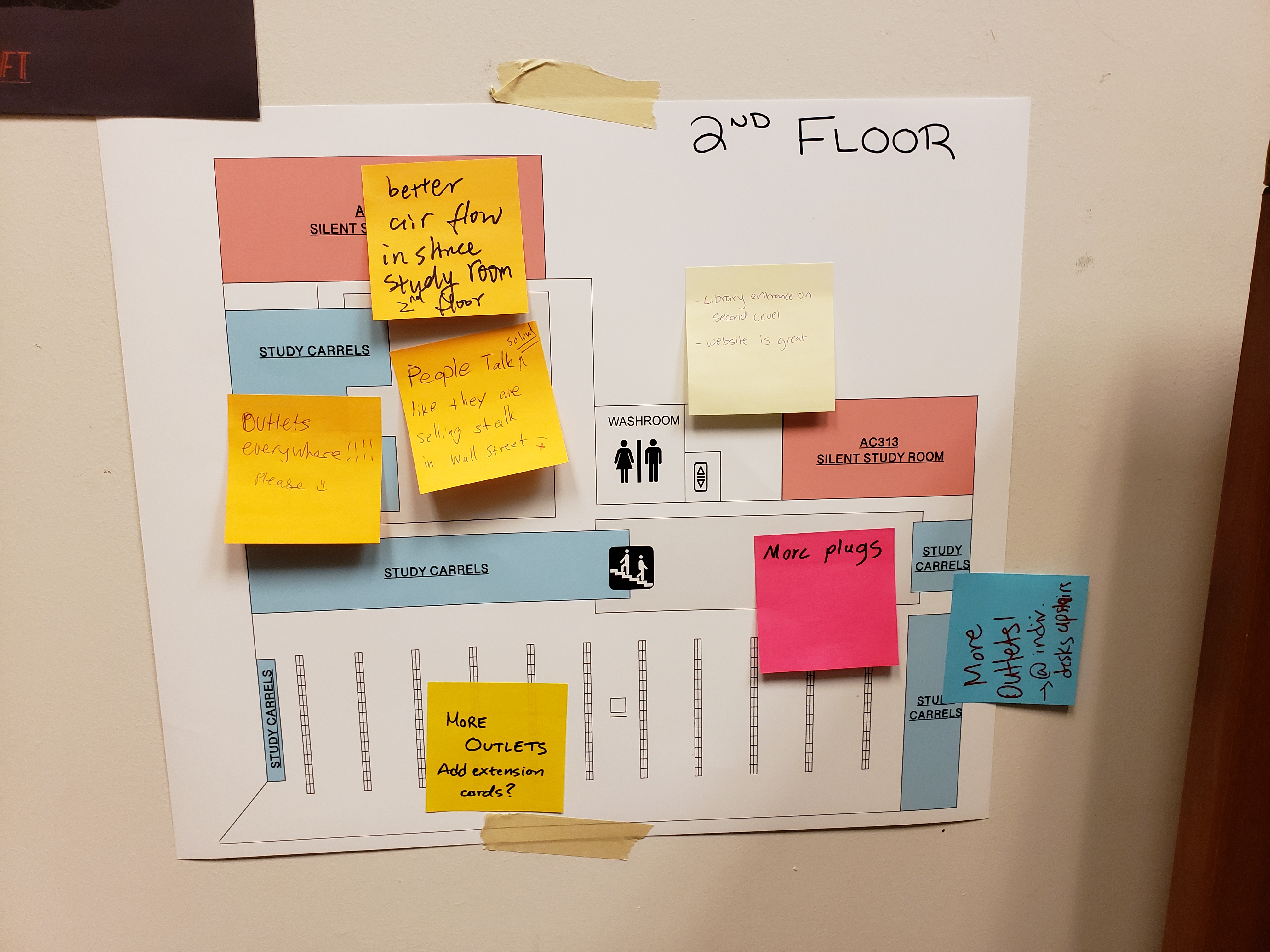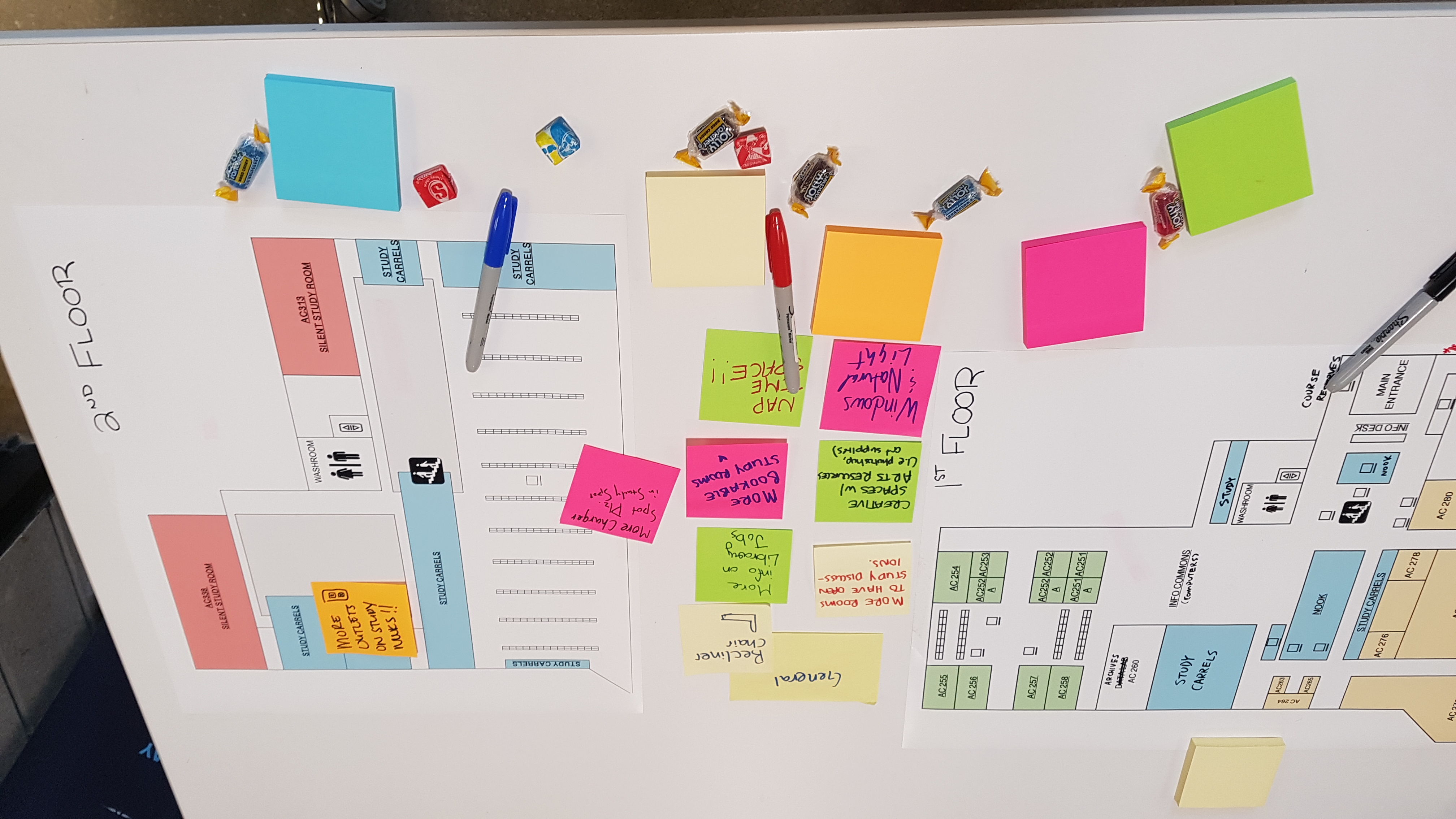This is 1 of 4 UX projects conducted during my time as the User Experience Librarian Intern at University of Toronto Scarborough (UTSC) Library.
In late 2020, the University of Toronto Scarborough intends to undergo a rennovation project of its primary campus library, the Vincent W. Bladen Library (or UTSC Library). As part of the planning process, I partnered with the Web & User Experience Librarian at UTSC as a UX consultant to the Library Space Planning Committee, conducting research to develop an understanding of the current patron experience.
The original plan—drawing from existing and draft library floor plans—proposed a weekly UX pop-up area for passersbys to write feedback, comments, or suggestions on sticky notes about the existing library space and services, in exchange for snacks and candy. With iterative feedback, there would be potential to return weekly with updated floor plans, and design study spaces (e.g. group study rooms, etc.) in a participatory design process.
Unfortunately, due to nearby quiet study space restrictions, this proposal had to be reworked. The final outcome was a one-hour, UX Pop-Up Table that was held just outside the library doors around late morning or noon, on February 27 and March 5, 2020. Although the study period was intended for a minimum of four weeks, we were unable to continue due to COVID-19 closures. However, despite our shortened study period, we were able to collect 28 comments and offered a summary of our findings and recommendations to the UTSC Library Space Planning Committee.
Additionally, we were able to make space on the table to include digital services and spaces in our research scope, by promoting our ongoing library website card-sorting study.
